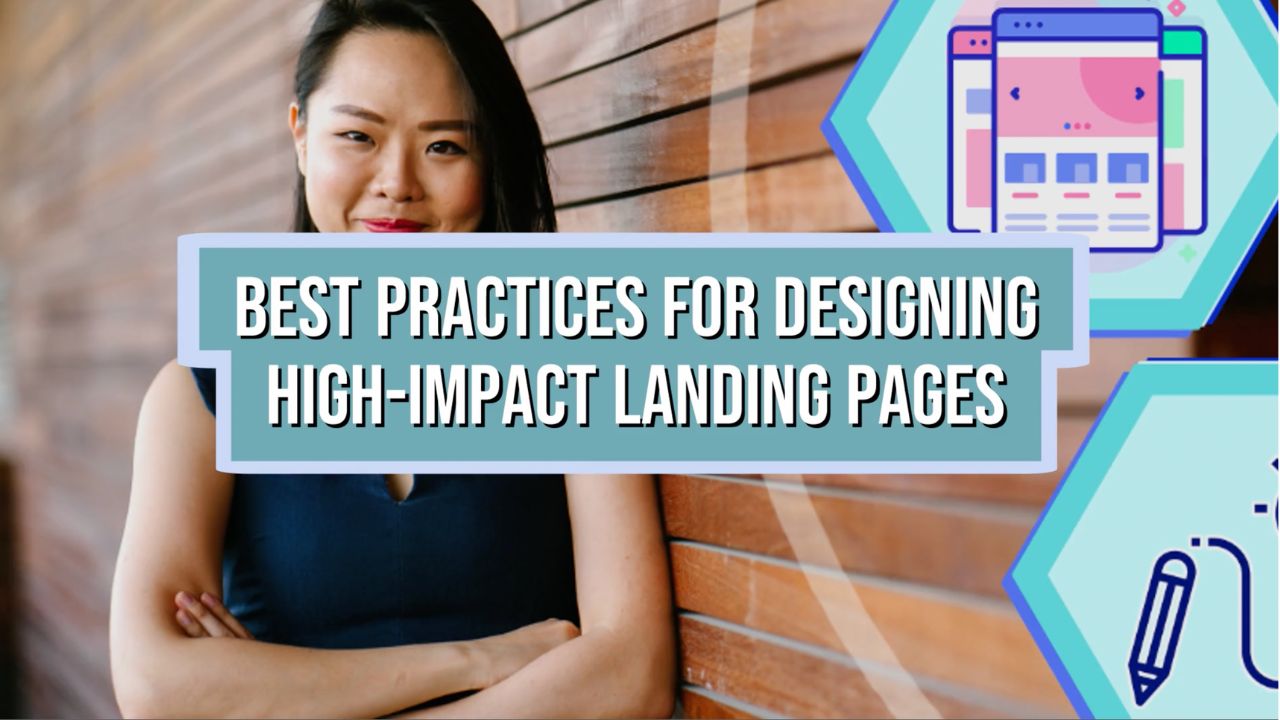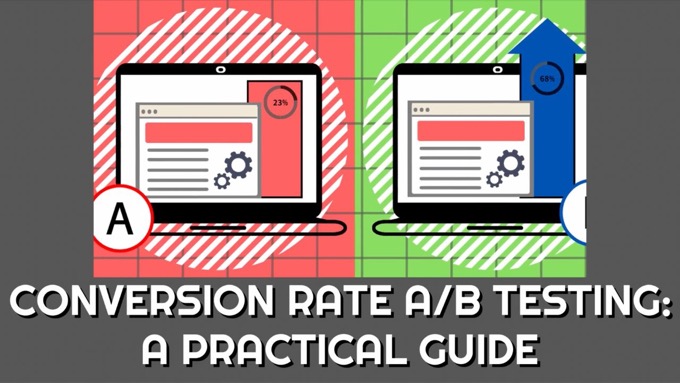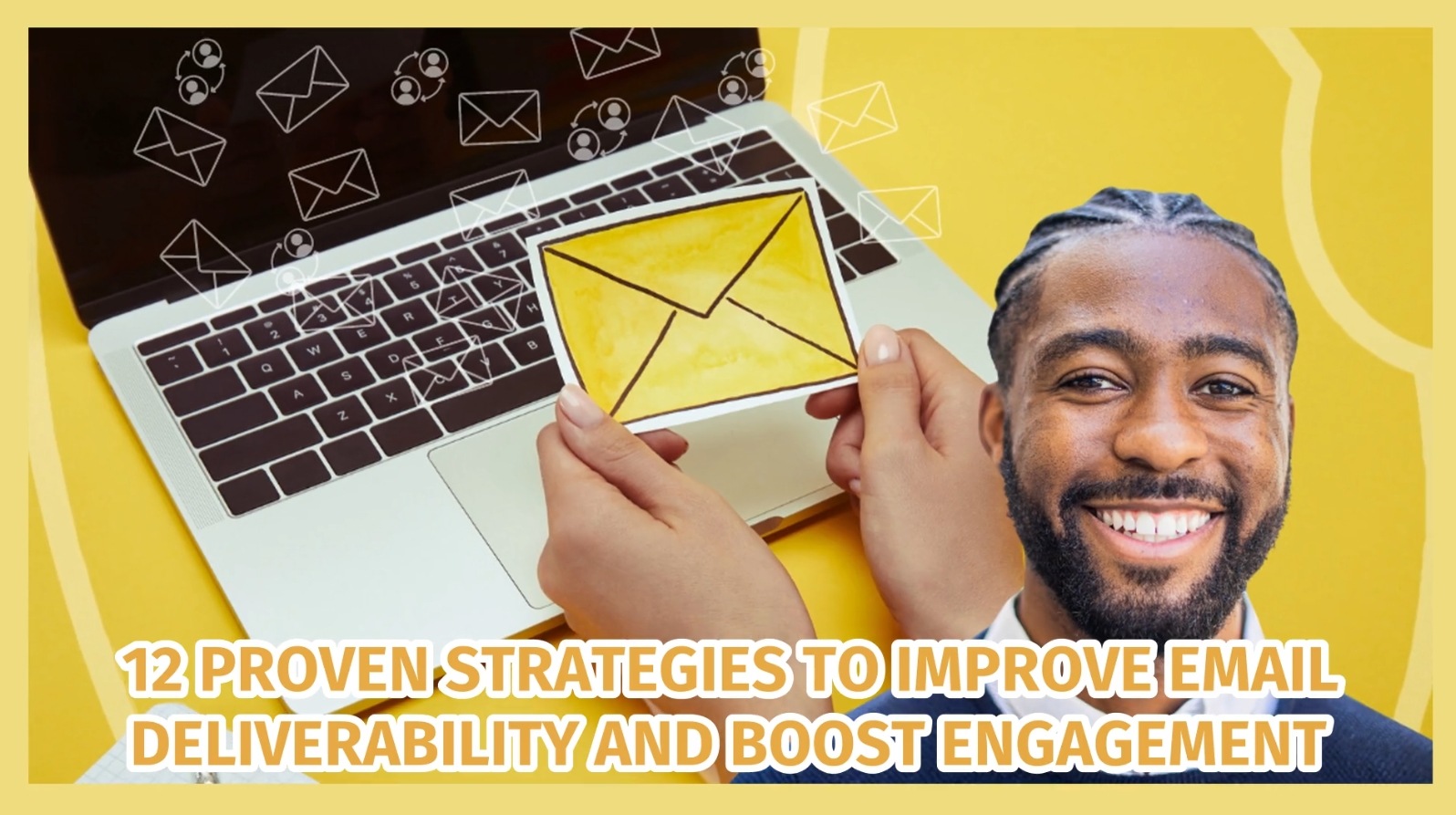As you're no doubt aware, landing pages are the silent closers of sales and leads.
But not all landing pages are created equal.
That's where high-impact landing pages come into play, turning casual browsers into committed buyers or leads with remarkable efficiency.
This isn't about mere aesthetics; it's about crafting a strategic gateway that aligns perfectly with your audience's needs and your business goals.
- But what transforms a standard landing page into a high-performing powerhouse?
In this post, we delve into the best practices for designing landing pages that don't just inform but compel action—whether that's making a purchase, signing up for a newsletter, or downloading a resource.
From understanding your audience, crafting compelling headlines, to optimizing calls-to-action, each step is a crucial piece of the puzzle.
Ready to elevate your landing page game?
Let's explore these key strategies that promise to boost your conversion rates and enhance your digital marketing efforts. 🚀
9 Best Practices for Designing a High-Impact Landing Page
1. Understand Your Audience to Drive Better Conversions
Before you dive into designing your high-impact landing page, it's crucial to pinpoint exactly who you're speaking to.
This isn't merely about demographics; it's about diving deep into the psyche of your potential customers to understand their motivations, challenges, and what ultimately drives them to take action.
Why Is This Important?
A landing page crafted without a clear understanding of its audience is like a billboard in the desert: visually striking, perhaps, but ultimately ineffective because the right people aren't seeing it.
Here’s how you can align your landing page design with the needs and preferences of your target audience:
When you think you know your audience, dig deeper.
Run surveys, conduct interviews, or invest in market research.
The deeper your understanding, the more compelling and targeted your landing page will be.
If targeting tech-savvy millennials, consider a clean, modern design with concise messaging and tech-related imagery.
Remember, the goal is not just to attract visitors but to convert them into leads or customers. 🎯
By understanding your audience deeply, you can craft a landing page that not only captures attention but also drives action.
2. Write Headlines That Grab and Convert
The headline of your landing page is often the first point of interaction for your visitors.
It's the make-or-break moment—where you either capture interest or lose it entirely.
Think of your headline as the front door to your digital home; it needs to be inviting and clear about what visitors will get if they step inside.
Your headline is your first impression. Make it specific, benefit-driven, and impossible to ignore.Click To Post OnWhy Focus On Headlines?
A compelling headline sets the tone and expectation, effectively communicating the value proposition within a few seconds.
Here are some actionable strategies to craft headlines that grab attention and resonate with your target audience:
- Be specific and benefit-oriented—your headlines should give a clear indication of what the visitor will gain. Instead of generic phrases like "Get Started Today," opt for something more tangible like "Boost Your SEO Rankings in 30 Days."
- Clarity over cleverness—while it’s tempting to make your headline witty, clarity should always come first. Ensure that your headline is straightforward and easy to understand at a glance.
- Use strong, active language—words like 'Discover', 'Transform', and 'Achieve' can add a dynamic and motivational tone to your headline. They encourage the reader to envision the positive outcomes of engaging with your page.
- Match the headline with the intent—align your headline with the specific stage of the buyer’s journey. If your landing page is designed for conversions at the decision stage, your headline should reflect that with a strong call to action.
A/B testing different headlines can significantly optimize the performance of your landing page.
Test variations in wording, length, and style to see what resonates best with your audience and drives conversions.
- "Unlock Exclusive Membership Benefits Today!"
- "Step Into Your Dream Home: Begin Your Journey Here"
- "Revolutionize Your Workflow With Our Cutting-Edge Tools"
Remember, your headline is your first impression. 👀
Make it count by being clear, compelling, and directly tied to the needs and desires of your audience.
This isn’t just about drawing them in—it’s about setting the stage for everything that follows on your high-impact landing page.
3. Craft Content That Sells Through Clarity and Persuasion
Once your headline has grabbed attention, the real work begins.
Your landing page content must not only maintain interest but also persuade visitors to take action.
Clarity and persuasion are your tools here, helping to guide visitors through your message quickly and effectively towards conversion.
Here’s how to strike the perfect balance:
Keep It Concise
Use short, impactful sentences and paragraphs.
The faster your audience can digest the information, the quicker they'll reach a decision point.
Avoid overwhelming your visitors with too much text; get to the point swiftly.
Highlight Benefits, Not Features
Focus on how your product or service improves the user's life or solves a problem.
Instead of saying "Features a 12-hour battery life," say "Enjoy a full day’s work without recharging!"
Use Bullet Points
Break down complex information into easily digestible bullet points.
This helps in:
- Scanning—visitors often scan content before deciding to read in detail.
- Highlighting key benefits—each bullet point can emphasize a different advantage.
Choose Powerful Words
Verbs like "transform," "launch," or "discover" can add an active, engaging tone to your content.
These words help create excitement and encourage action.
Always align your content with the specific action you want the user to take.
If the goal is to sign up for a newsletter, ensure your content makes the value of that newsletter crystal clear.
- Before—our software features integration with multiple platforms.
- After—simplify your workflow with seamless integration across all major platforms!
- Visual aids—use graphics or icons next to text to visually represent your points, making them even easier to grasp.
Persuasive content not only informs but also connects on an emotional level.
Consider the emotional triggers that might influence your audience to act and weave these subtly into your content.
By focusing on clarity and persuasion, your landing page content will not just be read—it will be acted upon.
Remember, the ultimate goal is conversion, and every word should guide the visitor toward that outcome. 🛤️
4. Eliminate Distractions and Drive a Single Action
Why It Matters
High-impact landing pages succeed because they guide visitors toward one clear objective.
When you try to do too much—offer multiple CTAs, overload with options, or clutter the layout—you dilute the impact and confuse the visitor.
Here’s how to build a focused experience that drives results:
If it doesn’t support your main goal, cut it.
A streamlined page increases clarity, reduces decision fatigue, and boosts conversions.
Landing pages with a single, clear CTA see up to 266% more conversions compared to those with multiple offers.
5. Use Visuals Strategically to Boost Conversions
A picture is worth a thousand words, and on your landing page, the right visuals can be worth countless conversions.
Visual elements such as images, videos, and icons play a pivotal role in enhancing the user experience, directing visitor attention, and ultimately boosting your conversion rates.
Here’s how to effectively integrate visuals into your landing page design:
If using stock photos, choose images that feel authentic and reflect diversity. Custom photography, although more expensive, can significantly elevate your brand’s perceived value.
Use images that evoke emotion or response, such as happy customers or visuals that depict success.
Emotionally charged images can significantly increase engagement and conversions.
An image of a person looking towards the form you want visitors to fill out can naturally draw their eyes in that direction.
Including videos on landing pages can increase conversions by up to 80%, according to some studies.
Keep videos short, engaging, and to the point.
Remember: Visuals are not just decoration—they are communication tools.
Each visual element should enhance the story your landing page is telling and help guide the visitor towards making a conversion.
Choose wisely, optimize meticulously, and watch your engagement soar! 🚀
6. Build Trust with Strategic Social Proof
In the digital realm, trust is paramount.
Prospective customers are more likely to engage with your brand if they see that others have had positive experiences.
This is where social proof comes into play, serving as a powerful tool to enhance credibility and reassure visitors of their decision to engage with your landing page.
Trust isn't built with claims—it’s earned with proof. Leverage testimonials, ratings, and case studies to remove friction.Click To Post OnHere’s how to effectively leverage social proof:
Highlight Customer Testimonials
Include quotes from satisfied customers to show real-life endorsements of your product or service.
Ensure these testimonials are authentic and relate directly to the key benefits of your offering.
Use photos or videos of customers for added authenticity.
Seeing a real person adds a layer of trust and relatability that text alone cannot achieve.
Showcase User Reviews and Ratings
If applicable, display user ratings from your website or third-party platforms.
A high star rating can instantly boost the perceived quality and reliability of your product.]
Display a summary of user reviews with an option to read more detailed accounts.
This not only builds trust but also keeps your landing page clean and uncluttered.
Utilize Trust Badges
Security badges, awards, accreditations, or press mentions can significantly enhance trust.
Place these strategically on your landing page to reassure visitors of your legitimacy and industry standing.
Trust badges are particularly effective in industries where security and privacy are concerns, such as fintech or health services.
Success Stories and Case Studies
Share detailed accounts of how your product or service has helped other businesses or individuals.
Include specific data and outcomes to make these stories compelling and relevant.
Accompany case studies with infographics or visual data representations to make the success stories more engaging and digestible.
Social Media Mentions
If your brand has been positively mentioned by influencers or has a robust social media following, highlight this on your landing page.
Social media validation can influence decision-making, especially among younger demographics.
Remember: Social proof should not overwhelm the main message of your landing page but rather complement it.
Integrate these elements naturally, ensuring they support your call-to-action and overall conversion goals.
By strategically deploying social proof, you can transform visitor skepticism into trust, paving the way for higher conversion rates. 🌟
7. Optimize for Mobile to Capture On-the-Go Conversions
In today's fast-paced digital landscape, mobile optimization isn't just a nice-to-have; it's essential.
- Over 50% of web traffic comes from mobile devices, making it crucial that your landing page performs flawlessly on smartphones and tablets.
Here's how to ensure your landing page is optimized for mobile users, enhancing user experience and boosting conversions:
Responsive Design
Ensure your landing page looks great and functions well on all devices.
A responsive design automatically adjusts content and elements to fit different screen sizes.]
Use CSS media queries to fine-tune each element for optimal display on different devices.
Fast Loading Times
Mobile users expect quick access.
A slow-loading page can lead to high bounce rates and lost opportunities.
Compress images and use modern file formats like WebP for faster loading without losing quality. Also, leverage browser caching and minimize HTTP requests.
Simplified Layout and Navigation
Mobile screens offer limited space.
Prioritize simplicity and clarity in your design to enhance usability.
Use things like:
Touch-Friendly Elements
Ensure all interactive elements like buttons, links, and form fields are touch-friendly with adequate space and size to prevent user frustration.
Fingers are less precise than mouse cursors, so design with larger, easy-to-tap targets to improve user experience.
Prioritize Speed and Simplicity
Keep content concise and direct.
Mobile users are often on-the-go, so communicate your message quickly and clearly.
Instead of a long paragraph, use a bullet list to convey key benefits or features.
Test on Multiple Devices
Regularly test your landing page on various devices and browsers to ensure consistent performance and appearance.
Use tools like Google's Mobile-Friendly Test to evaluate your page’s mobile usability and identify areas for improvement.
Implementing these mobile optimization practices will not only cater to the growing number of mobile users but also signal to search engines that your landing page is designed with user experience in mind.
This can boost your SEO efforts, driving more traffic and increasing conversions.
Remember, in the mobile-first world, your landing page’s effectiveness is only as good as its mobile experience. 📱💡
8. Create CTAs That Actually Convert
Your call-to-action (CTA) isn't just a button on your page; it's the critical link between user interest and actionable outcomes.
Whether you're looking to gather leads, sell products, or subscribe visitors to your newsletter, the CTA is where you turn potential into reality.
Here’s how to craft a CTA that compels and converts:
Visibility Is Key
Your CTA should stand out visually. Use contrasting colors to make it pop against the background of your landing page.
The goal is to make it immediately noticeable as soon as someone lands on your page.
Don’t bury your CTA at the bottom of the page.
Consider placing it above the fold so that users don’t need to scroll to find it.
Use Action-Oriented Language
Your CTA copy should prompt action.
Use verbs that convey the benefit directly, such as "Get Started," "Discover," or "Join Now."
Avoid vague phrases that might cause hesitation.
Change "Submit" to "Unlock Your Free Trial" to add excitement and clarity to what happens next.
Create a Sense of Urgency
Encourage users to act now rather than later.
Phrases like "Limited Offer" or "Join Today and Save" can create a sense of urgency that encourages quicker decision-making.
Adding a countdown timer for limited-time offers can increase the effectiveness of this strategy.
Keep It Simple
The path from interest to action should be straightforward.
Limit the number of fields in your CTA form; ask only for essential information.
This reduces friction and increases the likelihood of conversion.
For forms, consider using auto-fill where appropriate to speed up the process for the user.
Test and Optimize
Not all CTAs will perform the same across different audiences and landing pages.
A/B testing different elements of your CTA—such as placement, wording, and colors—can reveal what works best for your specific audience.
Use tools like Google Optimize for easy A/B testing.
An effective CTA is clear, compelling, and makes clicking it irresistible.
By focusing on these elements, you can transform your landing page from a passive information holder to a dynamic conversion engine.
Remember, your CTA is where the magic happens—make it count! 🚀💥
9. Test and Optimize to Maximize Conversions
Once your high-impact landing page is live, the journey towards optimization begins.
Continuous testing and refinement are crucial for understanding what resonates best with your audience and drives conversions.
Here’s how you can implement an effective testing and optimization strategy:
Start with A/B Testing
Compare two versions of your landing page to see which performs better.
Focus on one change at a time—be it the headline, visuals, CTA, or even the overall layout—to accurately measure impact.
Use tools like Optimizely or VWO for sophisticated A/B testing capabilities.
These platforms provide insights not only on what changes work but why they work.
Utilize Analytics
Dive deep into your landing page analytics to gather data on visitor behavior.
Look at metrics like bounce rate, time on page, and conversion rate to get a sense of what’s working and what isn’t.
Heatmaps can be incredibly useful here.
Tools like Hotjar or Crazy Egg show you where visitors are clicking, scrolling, and spending time on your page.
Gather User Feedback
Sometimes, direct input from your users can provide actionable insights that analytics alone cannot.
Use surveys or feedback tools to understand user experience and expectations.
Ask questions like "What prevented you from signing up today?" to uncover obstacles in your landing page experience.
Iterate Based on Findings
Use the data from your tests and user feedback to make informed adjustments.
Remember, optimization is an ongoing process—there’s always room for improvement.
Putting all of this into action can lead to:
- Increased conversion rates—even small tweaks can lead to significant improvements.
- Better user experience—enhancing usability based on user feedback can lead to higher satisfaction and return visits.
Data-driven decisions—rely on concrete data rather than assumptions to guide your changes.
Final Thought: Testing and optimization are not about one-off changes; they are about continuous improvement.
By embracing a cycle of testing, learning, and refining, you can ensure that your landing page remains a dynamic, high-converting asset that effectively meets the evolving needs of your audience. 🎯🔄
High-impact landing pages don’t happen by chance. They’re engineered—one strategic, conversion-focused element at a time.Click To Post OnFrequently Asked Questions
What makes a landing page high-impact?
A high-impact landing page effectively compels action, aligns with audience needs, and integrates strategic design elements to boost conversions.
How can I understand my target audience for a landing page?
Create detailed buyer personas, gather data from analytics and customer feedback, and segment your audience to tailor your landing page content.
Why are visuals important in landing pages?
Visuals enhance user experience, direct attention, and can significantly boost conversion rates by engaging the viewer and illustrating benefits.
What is the best way to optimize a landing page for mobile devices?
Use responsive design, ensure fast loading times, simplify layout and navigation, and test on multiple devices to improve user experience and conversions.
How do I create an effective call-to-action on a landing page?
Make the CTA visually distinct, use action-oriented language, create urgency, simplify the form, and continually test different elements for optimization.
To Conclude
Crafting a high-impact landing page is more than just a design exercise; it's a strategic endeavor crucial for your digital marketing success.
By harnessing the power of targeted content, compelling visuals, and persuasive calls-to-action, you can transform a basic landing page into a conversion powerhouse.
Remember, the effectiveness of your landing page hinges not just on aesthetic appeal but on a deep understanding of your audience's needs and behaviors.
Take action today: start by revisiting your current landing pages with the insights and strategies shared here.
Implement changes, test rigorously, and optimize continuously.
Your landing page is the gateway to your business online—it's time to ensure it's as impactful and effective as possible.
Dive in, enhance, and watch your conversion rates soar.
The journey to a standout digital presence is just a few tweaks away! 🚀








